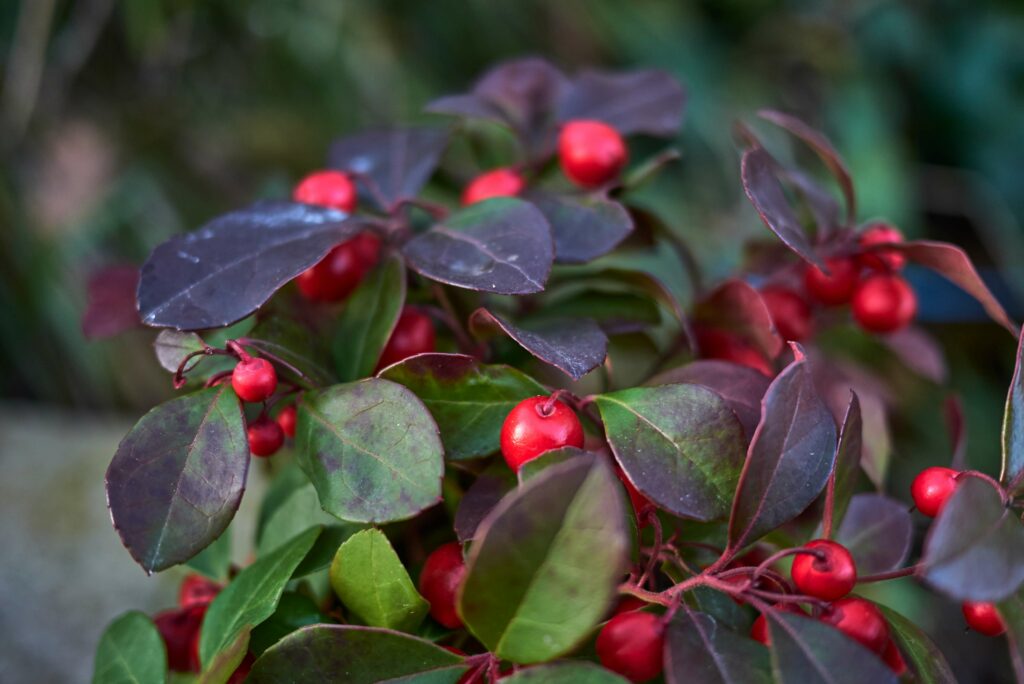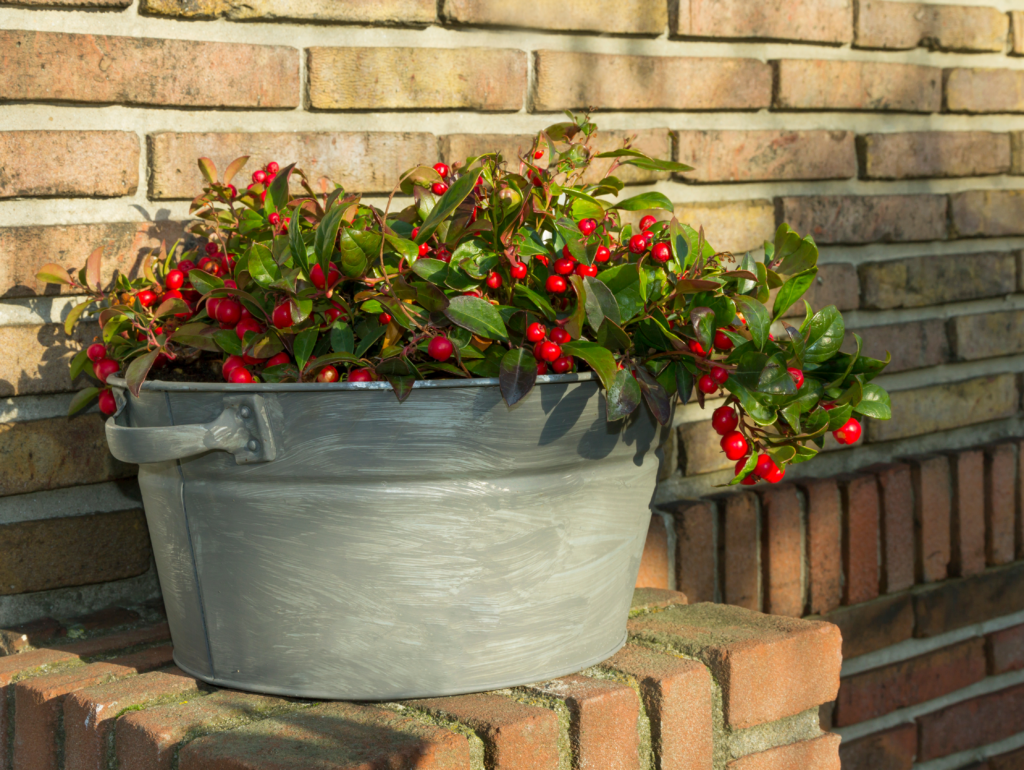Gaultheria
| Name: Gaultheria | Family: Ericaceae | Type Plant: Evergreen shrub |
| Flowering time: Summer (usually July to August) | Best time to buy: Spring or early fall | Max Height: height ranging from 10 to 15 cm |
| Sun/Shadow: Partial shade to full shade | Wintergreen: Yes | Humidity: Prefers moderate to high humidity |
Origin
Gaultheria, or Mountain Tea, is a genus of plants in the heather family (Ericaceae), boasting about 135 species predominantly found in North America, South America, East Asia, and Australia. It blooms in summer with charming rose-coloured flowers and, in winter, showcases striking red fruits that enhance the festive ambience. The plant features glossy, dark green leaves that turn from deep red to purple in autumn, adding a vibrant touch to the berries that persist throughout winter. Simply put, Gaultheria can be grown all year round.
Characteristics
Gaultheria are evergreen shrubs with small, glossy leaves, forming low, dense clumps. The flowers are typically small, bell-shaped, and come in white or pink hues. What appear to be berries are modified calyxes (pseudo berries) enclosing the seeds.
Care
Gaultheria prefers semi-shade, acidic, humus-rich soil, and consistent, moderate watering to keep the soil moist. Fertilise in the spring using a formula designed for acid-loving plants. While the plant is frost-resistant, it’s wise to mulch during harsh winters. Pruning isn’t necessary, but removing damaged shoots in spring can benefit the plant. Although it’s generally pest-resistant, avoid overwatering to prevent fungal diseases.
Inspiratio
Gaultheria is treasured for its medicinal uses, particularly wintergreen oil for pain relief, and its ornamental beauty. The evergreen leaves and red berries provide a year-round colour, especially in winter gardens. Thriving in shaded, acidic soils, Gaultheria is a favourite in woodland designs. Its resilience and aesthetic appeal inspire its use in both natural medicine and decorative landscaping.










